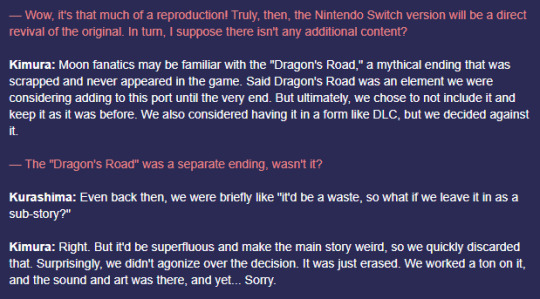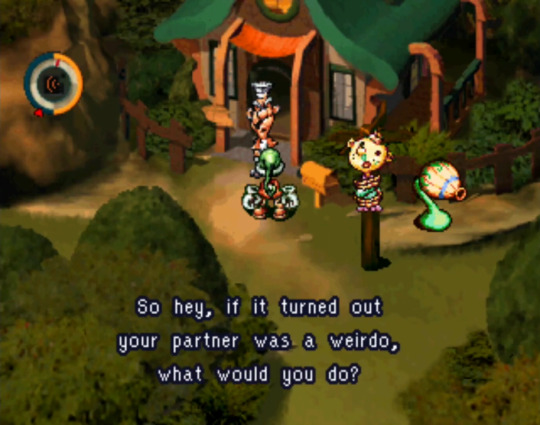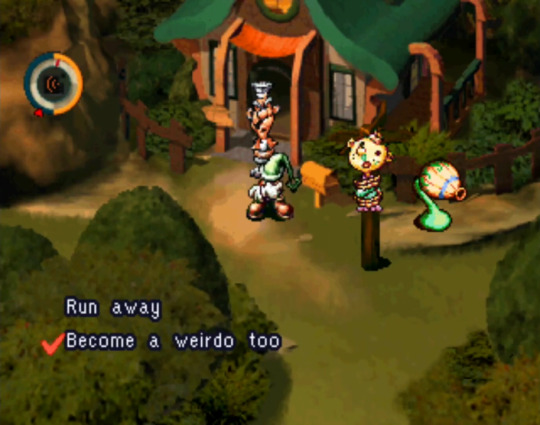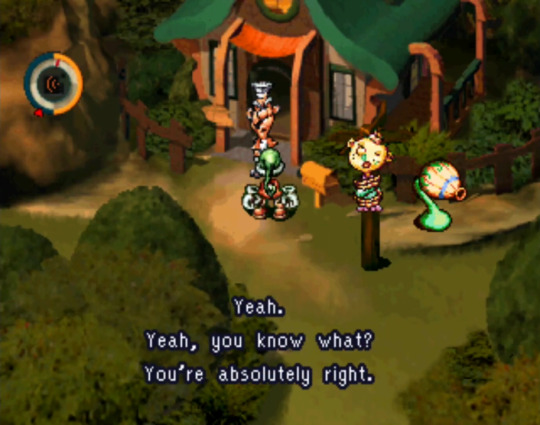#Moon Remix Rpg
Explore tagged Tumblr posts
Text

there's a love that never changes no matter what you've done!
#moon rpg#moon remix rpg adventure#moon remix rpg#forgot what a pain it was to tag for this game. for da love of god#invisible boy#hero (moon rpg)#worlds first moonrpg fanart based on a mewithoutyou song. maybe#and i tried out watercolor again :] hope you enjoy#art#draws
134 notes
·
View notes
Text
Beautiful sight of the Moon's Inhabitants

Moon Remix RPG Adventures is an amazing game, i'm glad it got re-released by Onion Games. So i've drew all the Animals from that game, because they're best critters to ever critter.
Originally drawn somewhere in April of 2023
#my art#traditional art#meme#fishman paul#moon remix rpg adventure#Moon Remix Rpg#alien#Bird#Fish#fast food#Food#eggplant#slime#plants#whale#Bat#Witch#Pumpkin Head#Snake#Elephant#Mole#Slug#Snail#Frog#Worm#Turtle#Animals#Monsters
14 notes
·
View notes
Text

quick redraw of this! once again related to frankenbugs streams yippee!!
42 notes
·
View notes
Text
youtube
#music#moon remix rpg#idk who made this cause that game is actually all soundtracked by actual indie bands#Youtube
2 notes
·
View notes
Note
you know doing some research there seems to be a specific term for the "sample babble" used in Love-de-Lic and successor studio's games: Henteko Speech. The term is used in the credits for Little King Story, which was directed/produced by a Love-de-Lic alum (Yoshiro Kimura i.e. the Chulip/Onion Games guy), and while not developed by one of Love-de-Lic's successor studios itself, one of the Love-de-Lic successors (Vanpool) was subcontracted to do the sound design, with Moon's own sound designer Masanori Adachi being credited under "SE Design and Henteko Voice Treatment".
This is actually some hugely cool archival/history work, thank-you for telling me!
#ask#digamma-f-wau#chulip#love-de-lic#lovedelic#moon#moon remix rpg#sample babble#henteko speech#SORRY i'm giving it as many tags as i possibly can so i can find it later#little king story
7 notes
·
View notes
Text
CATCH! but this time i actually added one of my favorite tracks from Moon playing along with it
#owllunch art#my art#moon remix rpg#moon remix rpg adventure#love de lic#onion games#moon#moon rpg#ps1 games
10 notes
·
View notes
Text
youtube
In 1997, a charming little game boldly challenged the conventions of the RPG genre. This game not only made a bold statement by deconstructing everything from RPG combat to the way you loot people's homes, but its message of spreading love and saving monsters would later inspire Toby Fox to create Undertale. In this video, I go over Moon's STRONG opening hours, with their biting commentary and metanarrative, whimsical world and charming setting, and unique gameplay mechanics that make it such a groundbreaking piece of gaming history, especially for 1997. So join me on this little journey, with my first impressions of this game and why it's such a special experience.
78 notes
·
View notes
Text
Moon: Remix RPG Adventure - Kera-Ma-Go
33 notes
·
View notes
Video
tumblr
A Japanese commercial for 'MOON: Remix RPG Adventure' on the PlayStation. Support us on Patreon
38 notes
·
View notes
Text



UNDERTALE x Moon: Remix RPG Adventure
23 notes
·
View notes
Text

Another collage of 30 drawings I did in Mario Paint! I would say that compared to the last two batches, I was really interested in darker tones to contrast the vibrant color palette that Mario Paint has to offer. I think I'm going to try and upload ones individually from here on out.
#mario paint#the joy of mario painting#satellaview#smrpg#harvest moon#megaman#mother 3#star fox#ghosts and goblins#pokemon#oregon trail#final fantasy series#wakka#max payne#parappa the rapper#um jammer lammy#yakuza#trogdor#wii sports#moon remix rpg adventure#animal crossing#splatoon 3#kingdom hearts#godzilla#drawings
25 notes
·
View notes
Text
I played the alleged anti-rpg, moon (1997) approximately 2 years ago; it was a game that took my mind by a storm and inspired a well of creativity unlike any other. After years upon years of being incapable of original work due to a deep rooted dry spell, it was moon that opened the floodgates of my brain back up and enabled me to start making things directly from the heart again.
I’ve played a lot of games, and moon is both a cult classic and one of the most fascinating for a good reason. In the 6~ ish hours you get with it, it communicates such a wealth of abstract thematics that have managed to create a ripple effect present with games we love even today. This post examines the core of the game: the metanarrative relationship that exists between The Hero and The Invisible Boy.
There are major spoilers for the game in this post. Please read at your discretion!
When moon posits itself as an anti-rpg, what does that term entail?
At a glance– the player assumes it’s a reference to the gameplay system which is structured around “saving” animals/monsters as opposed to fighting them.
However, what makes the game an anti-rpg in actuality has little to do with this feel good, heartening mechanic: because the very end of the game tells you distinctly that this mechanic will not truly save anything or anyone. Whether you’re killing or saving these monsters, animals, characters, etc. you are still viewing them as metrics, objects of your affection/destruction, numbers and things and targets for your own amusement. The Invisible Boy still has a leveling system, just like The Hero. To allow these creatures and characters to flourish, you ultimately must leave them behind. The game is an anti-rpg, not because you harness the power of pacifism over violence, but because the ultimate act of love for this game, for its characters, for its messaging is to step away from it and internalize what it’s communicated to you in your real life. That’s the only way you can “beat” it.
But to deconstruct this further: the game itself deconstructs the notion of “roleplaying” ala using the protagonist as a self insert through The Invisible Boy. Who is The Invisible Boy, and who is The Hero?
When introduced to the game, you are playing as a young boy who is subsequently also playing as a character: The Hero, who serves as his initial avatar. The first thing the game prompts you to do is enter a name. The title track of the song that plays during this sequence is Entry Song, a seemingly basic reference to “name entry” that doubles as an allusion to the fact that this is the exact moment where both the Invisible Boy and The Hero “enter” the world. The name you enter applies to both characters, a reveal that’s delivered to you at the very end of the game – The Invisible Boy has this name in lower case, while The Hero has it in upper case. Fundamentally the same name but mirrored to each other. The young boy is thrust into the world through the TV screen, losing his corporeal form and therefore becoming The Invisible Boy. His existence is a strange, undefinable thing; for a reason never made known or explicit, The Invisible Boy is capable of seeing dead animals felled by The Hero. This may be due to the metanarrative divide he exists within as a “real” boy who has entered the two dimensional world of the game, but his ability to communicate with the dead transcends his interactions with the slain animals. In the sequence with Tanaka, it’s noted that the Invisible Boy has the capacity for contact with spirits and that “regular people” cannot enter the liminal space that exists between the living and the dead. What does this imply regarding the Invisible Boy? I’ll circle back to this after establishing what we know about The Hero.
The Hero, when you are first introduced to him, only exists at the mercy and control of the boy controlling him; once that boy enters the universe, he seems to act in accordance to his mission regardless and is preoccupied with the notion of leveling up and defeating the Dragon no matter the cost. Of course, easter eggs and lore within the game go on to reveal that The Hero is actually Gramby’s dead grandson, pierced by the White Feathered Arrow and trapped within the cursed armor, which effectively brainwashed him into becoming a bloodthirsty warrior with no real cognizance of what’s going on. The rainbow generator may seem inconsequential, but rainbows often symbolize the bridgeway between life and death.
So what does that have to do with the Invisible Boy?
The simplest way of communicating it is that the Invisible Boy and The Hero quite literally cannot exist without one another. The prologue featuring The Hero (called FAKE MOON) that you go through foreshadows the game’s central plot events but through the lens of The Hero, which are then experienced through the lens of The Invisible Boy. From chasing around the “crazed dog?”, to the fight with Perogon, to boarding the airship, to the mass slaughter of the animals on the moon – the story of the game, whether it’s as The Hero or The Invisible Boy, has already been written into existence. Much of moon is storytelling in reverse, wherein the further you progress, the more you come to understand The Hero’s “reality” during FAKE MOON. The songs that play during FAKE MOON are songs that reappear during REAL MOON with different instrumentals to denote them (1, 2, 3, 4, 5). Same melody and yet it evokes a completely different feeling.
The Invisible Boy follows the same road as The Hero; everywhere The Invisible Boy goes, The Hero is shortly up ahead of him. They take the same steps, meet the same people, activate all of the same plot points. The Hero’s world is rigid and unyielding, limited to an 8 bit soundtrack with environments and people rendered to their simplest forms. The Invisible Boy’s world is a subversion of this, with no soundtrack to guide him – instead you’re given a variety of genre breaking tracks to play of your own accord, with only the sound of your own footsteps to accompany you (The Hero and The Invisible Boy’s footsteps are both used to characterize their presences). The Invisible Boy’s leveling system demands that he talks to and understands other characters, but there’s still a pervasive sense of loneliness that colors his gameplay, a feeling that never quite leaves; much like The Hero’s journey. When Gramby sees The Invisible Boy, she recognizes him as her grandson and uses the inverse of his name, the version of it that exists in all caps.
Is this to say that on some level, The Invisible Boy and The Hero exist as the same entity in dual points and egos? Possibly. The Invisible Boy is a real person, and The Hero comes into existence because of him. At the end of the game, when The Invisible Boy is slain by The Hero, The Hero dies immediately: because The Hero cannot exist without the Invisible Boy. When The Hero’s armor falls away, you do not see a child.
You see nothing. You see an invisible boy.
Florence speaks often of a recurring motif in this game: rebirth, the bridge between realities, life and death. Dying and being born again. The Hero gets his second chance – as the Invisible Boy. Because the Invisible Boy and The Hero are still a product of their design (the role of the protagonist), they condemn the cast and world to the same fate regardless of the means they take. Shedding their role within the game is the only way they can save anyone. Florence proposes that the dreamscape, the subconscious, is a gateway to another reality – The Invisible Boy’s “promises” to the Moon Queen take place in the dreamscape, where he retains his form as a human child as opposed to The Invisible Boy. The Invisible Boy and The Hero are both bound by their promise to save Love-De-Gard no matter the cost and no matter the sacrifice. On the moon, when you see the Moon Queen in person, she is physically attached to the Dragon The Hero fights: they exist as a dual ego, as two sides of the same coin. The Hero has been following the trail of the Dragon, while the The Invisible Boy has been following the guidance of The Moon Queen. They are one and the same.
Fiction, stories, games, are escapes to other realities that exist to us and us alone. We, as the player, make out its meaning. Is that meaning steeped in blood? Is it dehumanization? Is it gratification?
While many use the scrapped “ending” as a frame of reference for The Hero’s fate or what he truly is, that’s simply inaccurate; Kimura has talked about this “ending” quite a bit. Here is an interview where he states that not only was this not an “ending” but rather a part of a scenario that you’d clear in order to eventually attain an ending that resolved the scenario in question, but also that it was scrapped early into development because it was not the direction they had wanted to take the game in. Thematically, it’s incongruent with what we’re presented. Here’s another interview where Kimura discusses it, once again stating that it would clash with what the story was presenting as is.

Conversely, there is a vocal theater that was released where you follow along with The Hero, aka the young boy that exists inside of him. Near the end of this theater, you get to hear The Hero actively make the choice to exit the game and open the door; perhaps cementing the idea that The Hero and The Invisible Boy exist as dual egos, hence why neither are shown in the ending credits.
The Invisible Boy and The Hero could be viewed as an elaborate metaphor for our relationship to gaming and art. They could be viewed as a metaphor for how young boys are socialized into violence through gaming. They could be viewed as a literal story of rebirth. They could be viewed as a young boy, learning to navigate the world and himself, at odds with these two facets of himself. They could be viewed as a young boy wanting to learn how to do right by the world, and the creatures he’s come to love. They could be viewed as something so abstract, or something so literal, that the possibilities are endless – but their identities and roles are inextricably linked and form the heart of moon. After finishing, I dug through the game in a relentless pursuit in some attempt to understand what happened to The Hero, how his narrative could be read more mercifully, what the point of this child’s alleged suffering was–
In the end, the answer is simple. You are him and he is you, just as the Invisible Boy is.
42 notes
·
View notes
Text

Moon is a very lovely game, very important to me means a lot.
31 notes
·
View notes
Text
youtube
Onion Games is a small independent studio composed of three ex-Lovedelic team members: Yoshiro Kimura, Kazuyuki Kurashima and Hirofumi Taniguchi. Today's announcement of Stray Children displays an open desire of the ensemble to evoke and celebrate the original Lovedelic masterpiece. The choice of musical theme could hardly have provided a better hint - it's, of course, Debussy's 'Rêverie'.
Unequivocally, Stray Children will make its way to the west, as has been the tradition for all OG games to date.
168 notes
·
View notes
Text

MOON: Remix RPG Adventure fanart (2023)
163 notes
·
View notes



